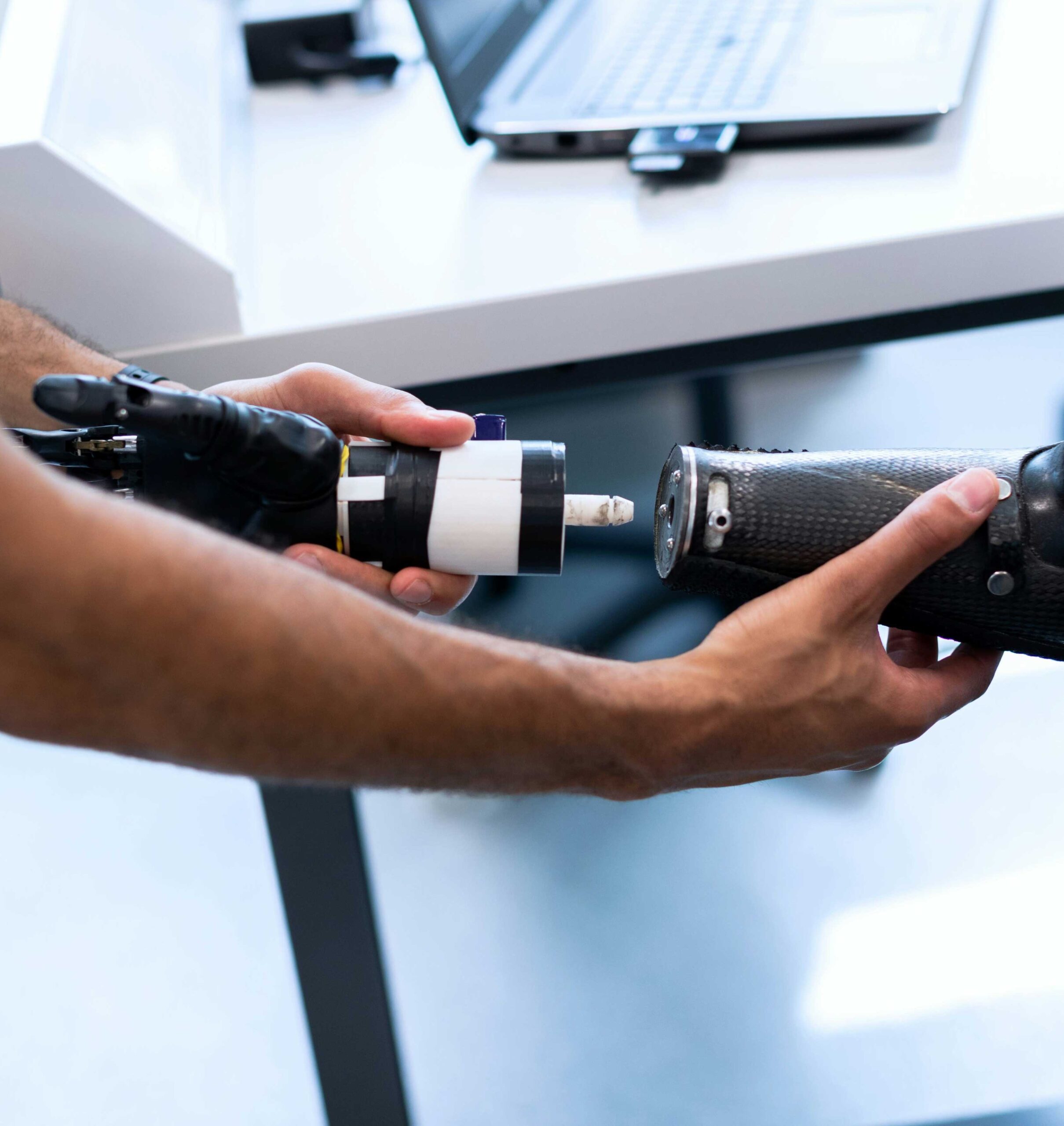Learning to Use a Prosthetic Arm
- Home
- Learning to Use a Prosthetic Arm
Learn what to expect when visiting the Asya Med Prosthesis and Orthosis Center. Learn More


Learning to use a prosthetic arm is a process that requires time, patience, and determination. The goal of a prosthesis is to restore some of the functionality lost with the amputation and to make daily activities easier. However, adapting to a prosthetic arm involves both physical and mental adjustments. Here’s an overview of what to expect and the steps to take in learning to use a prosthetic arm:
Prosthetic arms come in various types, including mechanical and myoelectric (controlled by muscle movements) models. The type of prosthesis you receive will depend on your needs and lifestyle. Mechanical prostheses may be more durable, while myoelectric prostheses offer finer control and more precise movements. Your doctor and prosthetist will help you choose the most suitable prosthetic arm for you.
One of the first steps is learning how to put on and take off your prosthetic arm. Properly fitting the prosthesis onto your residual limb (the remaining part of your arm) is crucial for effective use. Initially, this process may seem challenging, but with practice, it will become more natural and comfortable. It’s also important to learn how to clean and maintain your prosthesis to ensure it functions correctly.
A significant part of learning to use a prosthetic arm involves mastering the basic movements and controls. You will need to learn how to handle tasks such as gripping, holding, and releasing objects. Mechanical prostheses may require manual control of the elbow and hand, while myoelectric prostheses use muscle signals for more intuitive control.
In this stage, an occupational therapist will guide you in using your prosthesis for everyday tasks, ranging from picking up small objects to cutting fruit. This phase requires patience, as movements that initially seem difficult will become easier with practice.
Using a prosthetic arm can initially strain different muscle groups. Physical therapy is essential to build strength and flexibility in your arm and other parts of your body. Exercises will focus on strengthening muscles, improving coordination, and enhancing balance, all of which contribute to better prosthetic use.
Your physical therapist will also help you learn how to use your remaining body parts effectively while using the prosthesis. For example, improving balance and coordination can help you manage daily challenges more easily.
Adapting to a prosthetic arm is not just a physical adjustment but also a psychological one. The process of integrating the prosthesis into your daily life and accepting it as part of your body can be emotionally challenging. It’s normal to experience a range of feelings, including frustration or sadness.
Seeking psychological support or joining support groups can be beneficial in managing these emotional aspects. Talking to others who have had similar experiences or working with a mental health professional can provide valuable encouragement and help you build confidence.
Once you have become proficient in using your prosthetic arm, you will find that regaining independence in daily activities becomes more achievable. Tasks like dressing, eating, and personal care can be performed with the help of your prosthesis. An occupational therapist will assist you in learning how to complete these activities efficiently and comfortably.
Initially, these tasks may seem time-consuming and challenging, but with consistent practice, they will become more manageable. It’s important to recognize and celebrate small successes along the way.
Regular maintenance of your prosthetic arm is crucial to ensure its longevity and optimal performance. This includes cleaning the prosthesis, checking mechanical parts, and making necessary adjustments. If you experience any discomfort or issues with your prosthesis, consult your doctor or prosthetist promptly.
Learning to use a prosthetic arm can be a complex process, but with the right support and perseverance, you can successfully adapt to this new aspect of your life. The key factors are physical strength, mental adjustment, and patience. With time and practice, tasks that once seemed difficult will become more natural, and your prosthetic arm will help you regain independence and improve your quality of life.